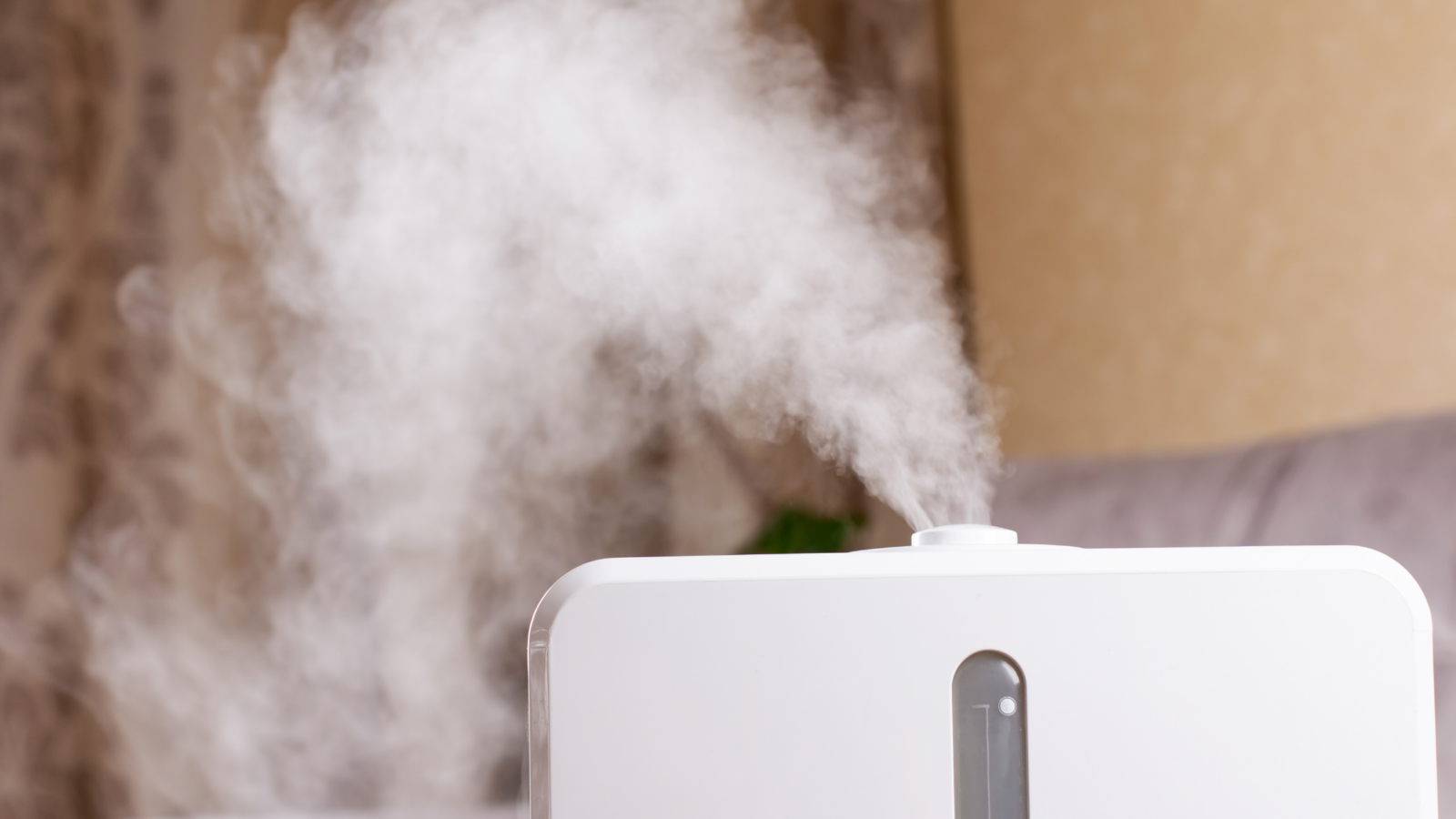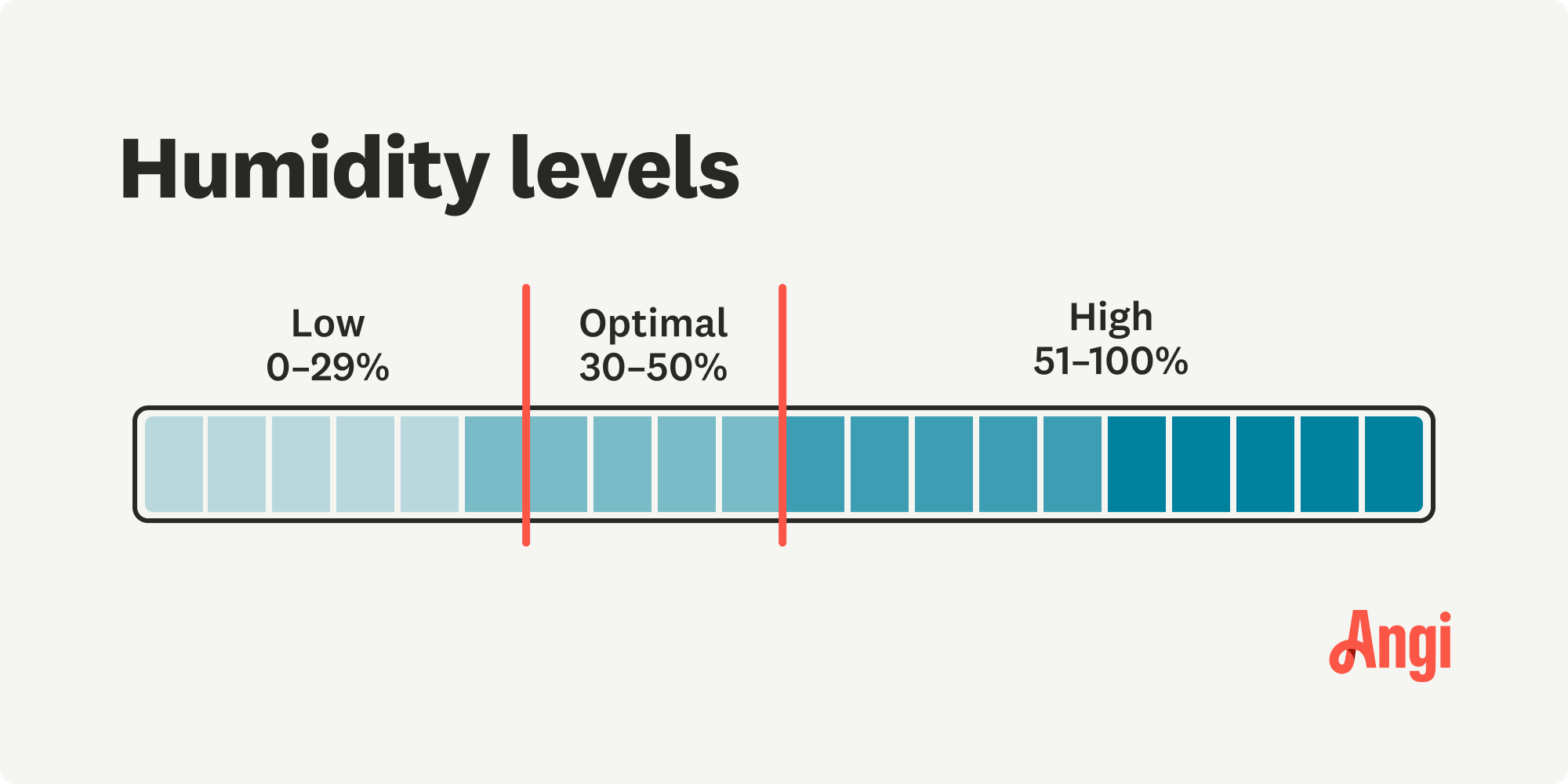Factors Affecting Humidity Levels: Best Humidity Level For Bedroom

The humidity level in your bedroom is influenced by a combination of factors, both internal and external. Understanding these factors can help you create a comfortable and healthy sleeping environment.
Climate and Season
The climate of your location plays a significant role in determining the humidity levels in your bedroom. Humid climates, like those found in tropical regions, tend to have higher humidity levels throughout the year. In contrast, arid climates, like those found in deserts, tend to have lower humidity levels.
The season also affects humidity levels. During the summer months, humidity levels tend to be higher due to increased evaporation. In the winter, humidity levels can drop as the air becomes colder and drier.
Household Activities
Everyday activities can also influence humidity levels in your bedroom. Cooking, showering, and drying laundry can all add moisture to the air, increasing humidity levels.
Geographic Locations and Sleep
Humidity levels can significantly impact sleep quality. High humidity levels can make it difficult to sleep comfortably, as the air feels heavy and oppressive. This can lead to difficulty falling asleep, frequent awakenings, and overall poor sleep quality.
For example, people living in coastal regions with high humidity levels may experience more sleep disturbances than those living in drier climates. Similarly, people living in humid climates during the summer months may find it harder to sleep comfortably.
Heating and Air Conditioning, Best humidity level for bedroom
Heating and air conditioning systems can have a significant impact on humidity levels in your bedroom. Heating systems can dry out the air, leading to lower humidity levels. Air conditioning systems can remove moisture from the air, also contributing to lower humidity levels.
Ventilation and Air Circulation
Ventilation and air circulation play a crucial role in regulating humidity levels. Proper ventilation allows fresh air to enter the bedroom, while air circulation helps to distribute moisture evenly throughout the space.
Poor ventilation can lead to a buildup of moisture in the air, increasing humidity levels. Similarly, inadequate air circulation can create areas of high humidity within the bedroom.
Tools and Techniques for Monitoring and Adjusting Humidity

Keeping track of and adjusting humidity levels in your bedroom is essential for a comfortable and healthy sleep environment. By understanding how to monitor and adjust humidity, you can create an ideal atmosphere that promotes restful sleep and overall well-being.
Types of Humidity Monitors
Humidity monitors, also known as hygrometers, are essential tools for measuring the relative humidity in your bedroom. They provide accurate readings, helping you understand the moisture levels in your environment. Here are some common types of humidity monitors:
- Analog Hygrometers: These traditional hygrometers use a hair or a piece of animal membrane to measure humidity. As the air becomes more humid, the hair or membrane expands, moving a pointer on a dial. Analog hygrometers are affordable and easy to use but may not be as accurate as digital models.
- Digital Hygrometers: Digital hygrometers use electronic sensors to measure humidity. They provide precise readings and often feature additional features like temperature readings, alarm functions, and data logging capabilities. Digital hygrometers are generally more accurate and offer greater versatility than analog hygrometers.
- Smart Humidity Monitors: These devices connect to your Wi-Fi network and allow you to monitor and control humidity levels remotely using a smartphone app. Smart humidity monitors offer real-time data, customizable settings, and integration with other smart home devices.
Using a Hygrometer
Using a hygrometer is straightforward. Follow these steps to measure humidity levels in your bedroom:
- Choose a location: Select a representative spot in your bedroom, away from direct sunlight, drafts, and heat sources. This ensures accurate readings.
- Place the hygrometer: Place the hygrometer at the desired location, allowing it to stabilize for a few minutes.
- Read the humidity level: Observe the hygrometer’s reading, which will display the relative humidity level in your bedroom.
Benefits of Using a Humidifier or Dehumidifier
Humidifiers and dehumidifiers are valuable tools for adjusting humidity levels in your bedroom, creating a more comfortable and healthy environment.
- Humidifiers add moisture to the air, which can be beneficial during dry seasons or in areas with low humidity. Humidifiers can help alleviate symptoms of dry skin, nosebleeds, and respiratory problems.
- Dehumidifiers remove moisture from the air, which can be helpful in humid climates or during seasons with high humidity. Dehumidifiers can help prevent mold growth, reduce allergies, and improve air quality.
Using a Humidifier Effectively
- Choose the right type of humidifier: Several types of humidifiers are available, including cool-mist, warm-mist, and ultrasonic humidifiers. Consider your preferences and needs when selecting a humidifier.
- Fill the humidifier with clean water: Use distilled or filtered water to prevent mineral buildup and maintain optimal performance.
- Place the humidifier strategically: Position the humidifier away from walls, furniture, and electrical outlets. Ensure adequate ventilation around the humidifier.
- Clean the humidifier regularly: Follow the manufacturer’s instructions for cleaning and maintenance. Regularly cleaning the humidifier helps prevent mold and bacteria growth.
Using a Dehumidifier Effectively
- Choose the appropriate dehumidifier size: Select a dehumidifier that is suitable for the size of your bedroom.
- Place the dehumidifier strategically: Position the dehumidifier in a well-ventilated area, away from direct sunlight and heat sources.
- Empty the dehumidifier’s water tank regularly: Regularly emptying the water tank helps prevent overflow and ensures optimal performance.
- Clean the dehumidifier filter: Follow the manufacturer’s instructions for cleaning and replacing the dehumidifier filter.
